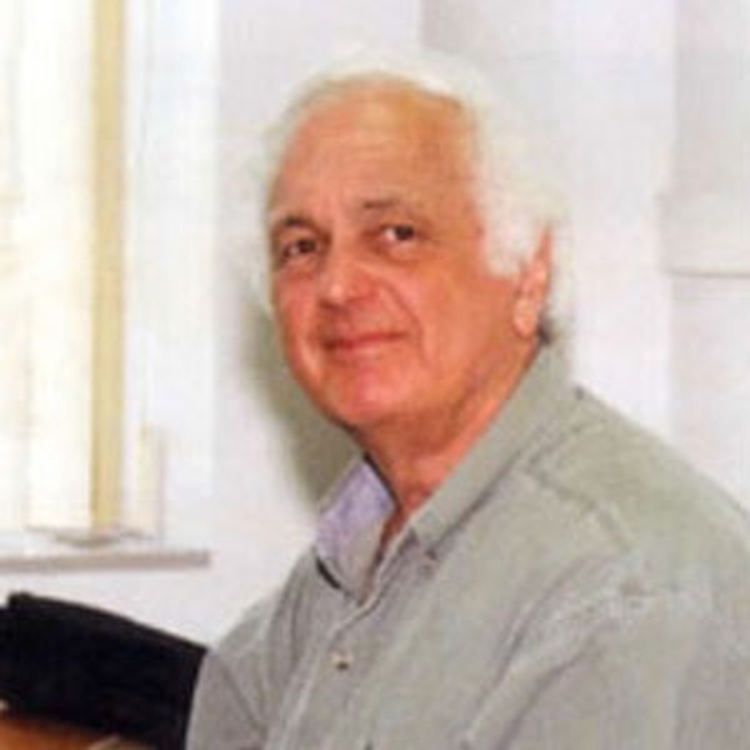Overview
The interaction of the mobile tectonic plates, which make up the Earth's surface, causes stresses that result in deformation and rock failure. When these stresses are released rapidly, earthquakes can result. The stresses then diffuse slowly away from the source. Geophysicist Selwyn Sacks studies the slow deformations that are a result of strain diffusion from large earthquakes, volcanic eruptions, and spreading events at the plate boundaries.
Sacks' analyses have helped determine the viscosity of the crust and uppermost mantle for Japan, California, and Iceland. Some of the deformations resulting from great earthquakes can be measured hundreds of kilometers from the source even after a century. In fact, it appears that the present-day strain field cannot be reliably estimated without allowing for the effects of past powerful earthquakes.
As an example, Sacks and colleagues showed that the devastating earthquake in Kobe, Japan, in 1995 was probably triggered by strain diffusing from large earthquakes in 1944 and 1946. Strain pulses are also capable of inhibiting earthquakes in instances where faults have many different orientations. Because of the orientation sensitivity, it is possible to calculate the probability of fault failures in these circumstances. In a region in south-central Japan, for instance, Sacks and collaborators found that all earthquakes during the period 1901-1969 occurred where the probability of fault failure was enhanced by strain diffusion that mostly resulted from the 1891 Nobi earthquake.
No earthquakes occurred where the strain pulses increased fault clamping. Although the physics of strain diffusion is reasonably well understood, the physics of slow earthquake rupture is not. Recent observations using highly sensitive borehole strainmeters - instruments coinvented by Selwyn Sacks - enabled the discovery of slow events that were not seen on instrumentation available earlier. Strainmeters can measure tiny deformations within the Earth.
Sacks recognized and analyzed the slower events and deformations. He and longtime colleague Alan Linde of DTM (now EPL) discovered that slow events can occur on the same faults that fail rapidly at other times. One of the most dramatic examples of this phenomenon occurs off northeast Japan, where there are subduction events as large as magnitude 8. Most of the plate motion there is released as slow, nondestructive events that could not even be detected until recently. To study this phenomenon more, Sacks and his team installed measuring instruments below the seafloor in 1999.
As an example, Sacks and colleagues showed that the devastating earthquake in Kobe, Japan, in 1995 was probably triggered by strain diffusing from large earthquakes in 1944 and 1946. Strain pulses are also capable of inhibiting earthquakes in instances where faults have many different orientations. Because of the orientation sensitivity, it is possible to calculate the probability of fault failures in these circumstances. In a region in south-central Japan, for instance, Sacks and collaborators found that all earthquakes during the period 1901-1969 occurred where the probability of fault failure was enhanced by strain diffusion that mostly resulted from the 1891 Nobi earthquake.
No earthquakes occurred where the strain pulses increased fault clamping. Although the physics of strain diffusion is reasonably well understood, the physics of slow earthquake rupture is not. Recent observations using highly sensitive borehole strainmeters - instruments coinvented by Selwyn Sacks - enabled the discovery of slow events that were not seen on instrumentation available earlier. Strainmeters can measure tiny deformations within the Earth.
Sacks recognized and analyzed the slower events and deformations. He and longtime colleague Alan Linde of DTM (now EPL) discovered that slow events can occur on the same faults that fail rapidly at other times. One of the most dramatic examples of this phenomenon occurs off northeast Japan, where there are subduction events as large as magnitude 8. Most of the plate motion there is released as slow, nondestructive events that could not even be detected until recently. To study this phenomenon more, Sacks and his team installed measuring instruments below the seafloor in 1999.
CV
- B.S., Electrical Engineering, University of the Witwatersrand, 1956
- Ph. D., Geophysics, University of the Witwatersrand, 1961
1993: Fellow, American Geophysical Union
- 1955 – 1962: Research Officer, Bernard Price Institute for Geophysical Research, University of the Witwatersrand
Involved in seismic and gravity research at sea, crustal refraction seismology, mine tremors. Developed variable-frequency, continuous-excitation seismic reflection/refraction systems. - 1964 – present: Staff Member, Department of Terrestrial Magnetism (Earth and Planets Laboratory), Carnegie Institution of Washington, Washington, D.C.
- #5739435. Strain sensing device. April 14, 1998 A modified transducer system to increase dynamic range and preserve baseline
- #5900545. Strain monitoring system. May 5, 1999 A very high-pressure, very high-temperature strainmeter with high sensitivity
